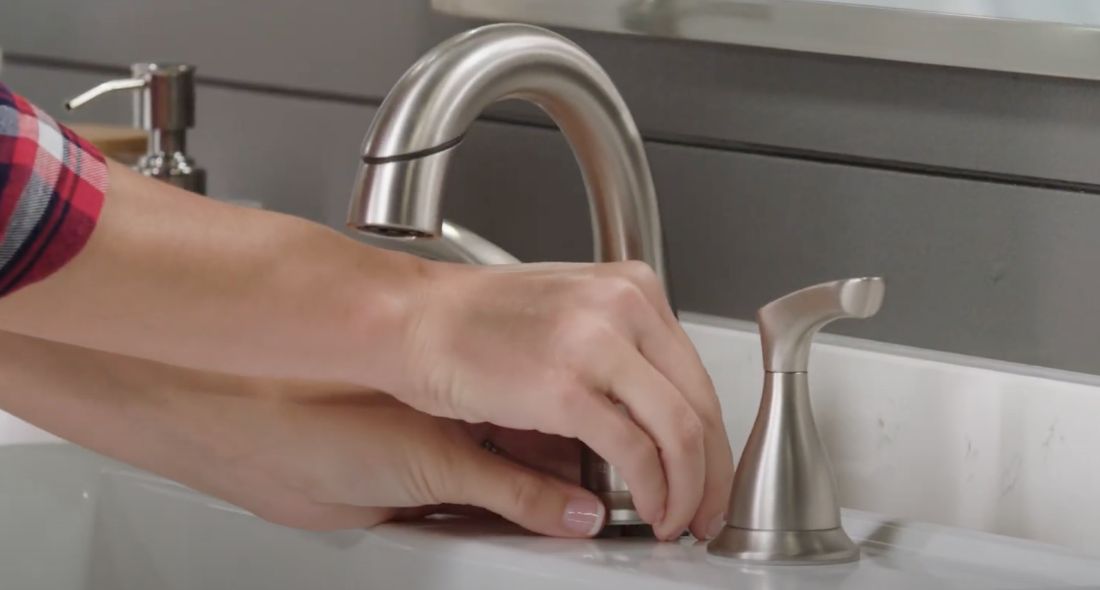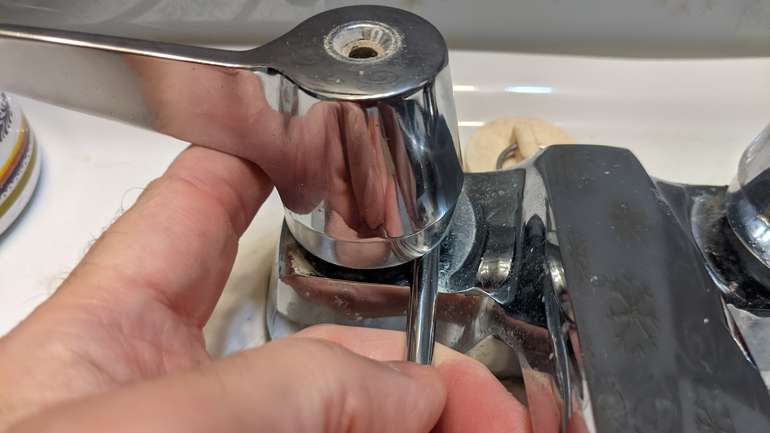What It's Crucial to Rectify a Malfunctioning Faucet
What It's Crucial to Rectify a Malfunctioning Faucet
Blog Article
Are you trying to find information about Should I Repair or Replace a Leaky Faucet??

Trickling faucets may feel like a small hassle, however their influence goes beyond just the nuisance of the audio. From drainage to incurring unnecessary monetary prices and health and wellness dangers, neglecting a trickling tap can lead to different consequences. In this article, we'll delve into why it's important to address this typical family concern without delay and successfully.
Waste of Water
Ecological Influence
Dripping faucets add significantly to water wastage. According to the Epa (EPA), a single faucet dripping at one drip per secondly can lose more than 3,000 gallons of water annually. This not only pressures water sources but also influences ecological communities and wild animals based on them.
Step-by-Step Overview to Repairing a Dripping Faucet
Tools Required
Before trying to fix a trickling tap, collect the needed tools, including a flexible wrench, screwdrivers, substitute parts (such as washers or cartridges), and plumber's tape.
Usual Tap Issues and Their Solutions
Identify the kind of faucet and the certain problem causing the drip. Typical problems consist of worn-out washing machines, corroded shutoff seats, or malfunctioning O-rings. Refer to maker directions or online tutorials for detailed advice on repair services.
Financial Prices
Enhanced Water Costs
Past the environmental effect, trickling faucets can pump up water costs substantially. The built up wastefulness with time translates into higher energy costs, which can have been stayed clear of with prompt repairs.
Potential Residential Or Commercial Property Damage
In addition, long term trickling can bring about harm to components and surfaces surrounding the faucet. Water buildup can create discoloration, rust, and even architectural issues if left unattended, causing extra repair work costs.
Wellness Worries
Mold and Mold Development
The consistent presence of wetness from a dripping faucet develops an ideal atmosphere for mold and mildew growth. These fungis not only jeopardize indoor air top quality yet also present wellness risks, specifically for individuals with breathing problems or allergies.
Waterborne Illness
Stagnant water in trickling taps can become a breeding place for microorganisms and various other pathogens, enhancing the danger of waterborne illness. Impurities such as Legionella germs prosper in stationary water, potentially bring about serious illnesses when ingested or inhaled.
Do it yourself vs. Specialist Fixing
Pros and Cons of DIY Repair
While some might try to take care of a leaking faucet themselves, do it yourself repair services feature their very own set of obstacles. Without correct understanding and tools, do it yourself attempts can aggravate the problem or lead to insufficient repair work, lengthening the issue.
Benefits of Working With a Professional Plumber
Working with a professional plumber makes sure that the underlying reason for the leaking faucet is attended to effectively. Plumbing professionals have the competence and tools to identify and fix tap concerns efficiently, saving time and lessening the danger of more damages.
Ecological Duty
Specific Contribution to Conservation
Taking responsibility for fixing dripping faucets aligns with broader efforts towards water preservation and ecological sustainability. Every individual's actions collectively make a substantial influence on protecting valuable resources.
Sustainable Living Practices
By focusing on timely repair work and taking on water-saving practices, individuals contribute to lasting living techniques that benefit both existing and future generations.
Safety nets
Regular Upkeep Tips
To avoid dripping taps, execute regular upkeep such as cleansing aerators, inspecting for leakages, and replacing damaged parts promptly. In addition, consider setting up water-saving tools or upgrading to a lot more reliable components.
Importance of Prompt Fixes
Addressing dripping faucets as soon as they're observed protects against further water wastage and potential damage, eventually saving both water and money over time.
Effect On Residential Property Worth
Assumption of Well-Maintained Building
Keeping a property in good condition, consisting of resolving upkeep concerns like leaking faucets, enhances its regarded value and desirability amongst prospective buyers or renters.
Impact on Resale Value
Residences with well-maintained plumbing components, including taps, command higher resale values in the property market. Dealing with trickling faucets can add to a positive perception throughout building evaluations and settlements.
Verdict
Dealing with a leaking tap surpasses mere benefit; it's a crucial action toward conserving water, decreasing monetary costs, and protecting health and wellness and home. Whether with DIY repairs or professional aid, doing something about it to take care of dripping taps is a tiny yet impactful method to promote liable stewardship of resources and add to a much healthier, a lot more sustainable future.
Why Are My Faucets Dripping (And Can I Fix it Myself)?
Causes of a Dripping or Leaking Faucet
Whether you’re hearing drops of water falling and hitting a sink, or noticing water ooze out from the base of the spout, you shouldn’t ignore a dripping or leaking faucet. And, the good news is, sometimes you can fix the problem yourself.
In this article, we’ll review a few common causes of dripping and leaky. We’ll also walk you through some basic ways to find the problem and handle it without calling anyone — and let you know when to call in a pro.
But, no matter what the cause, or whether you can handle it on your own, the sooner you address it, the better.
Each drip may be a tiny amount of water. But, they all add up quickly. According to the U.S. Geological Survey, one faucet losing one drop every 20 seconds — five a minute — wastes around a liter of water every day, and 173 gallons a year.
Add in more than one in your house, and it’s a lot of water to waste. So, we’ll help you get to the bottom of things quickly.
Four Reasons Your Faucet May Be Dripping
Aerator is Damaged or Unseated Valve Seat is Corroded O Ring is Loose or Worn Out Part of the Assembly is Loose Aerator is Damaged or Unseated
If you unscrew the end of your faucet, you’ll find the aerator. It’s the little stem piece with a screen on it that shuts off the water circulation.
If it’s damaged, or if it’s not sitting right, it will allow water to pass through.
Valve Seat is Corroded
Next is the valve seat, which is connected to the washer. If the washer wasn’t in place correctly, then it could have ground against the seat. Over time, this damages the valve seat.
The problem could also be corrosion: Over time, the part has worn out, and it’s now allowing water to pass through.
O Ring is Loose or Worn Out
Since the o ring is only a small rubber gasket, it’s a common reason why the faucet is dripping. You’ll find it at the base of the faucet, and it’s there to keep water from coming out where it’s not supposed to.
However, it’s common for the o ring to wear out over time. When it does, you’ll notice a drip.
Part of the Assembly is Loose
So far, we’ve looked at a few small, specific parts. But, the problem could be anywhere in the assembly if something’s out of place.
Even if a part isn’t damaged, over time, it may have become loose or dislodged. It could be the parts we mentioned, or the aerator at the tip of the faucet, the stem itself,
Can I Fix a Leaky Faucet Myself?
Depending on the problem, and how handy you are, there’s a chance you can fix a leaky faucet without calling a professional. But, you do run the risk of making the problem worse.
If it’s a small drip, you can certainly try a few troubleshooting tactics. We’ll walk you through them in a moment.
But, no matter what, your first step should be shutting off the water coming into the faucet. You should find a shutoff valve under the sink on the pipes leading to it. Turn each one clockwise until they close tightly.
Next, make sure you have the right tools for whatever you’re attempting. It’s tempting to make do with what you have. But, you need the right ones for a reason: You’re often dealing with small parts that can break if you handle them carelessly.
If you’re feeling confident, here are some places to start.
Items Near the Tip of the Faucet
A few of the parts we mentioned — particularly the valve seat and washer — are located at the tip of the faucet where the water comes out. They’re easy to access, making it a good place to start.
Check the O Ring
To check the o ring, you’ll need to take off the spout at the base. It’s easiest on kitchen sinks with long spouts, versus the smaller, bulkier base on most bathroom sinks.
Either way, this can be tricky, so do it carefully and don’t force anything. If it’s not coming right off, you’re much better off calling in a pro than possibly breaking something.
For a kitchen sink, there’s usually a nut or coupling assembly at the base of the spout. These often slide off easily without using any tools.
Once you’ve disassembled those parts, gently but forcefully twist off the spout.
Then, you can see the o rings. There should be two of the rubber gaskets on the base. If they look worn or damaged, replace them, and see if that solves the problem.

Do you enjoy reading up on Why It's Important to Fix Leaky Faucets? Put feedback down the page. We will be glad to know your thoughts about this write up. We hope that you visit us again soon. Enjoyed our write up? Please quickly share it. Let others find it. I am grateful for your time. Please check our site back soon.
Report this page